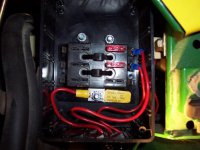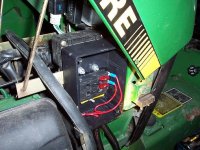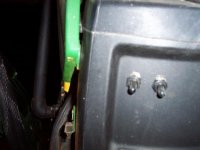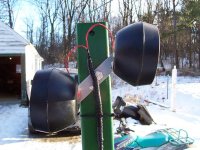yes: you are right, I wasn't paying enough thinking into it, math was right terms were backwards :rollin:

I is amps and E is volts,
the insulation does not make it carry MORE amps it lets the wire get hotter before it melts the wire.
current (actually ELECTRON FLOW) flowing over outside does not matter if it is low freq (DC) or extreme high frequency (though wave guides are use primarily when talking VHF and stuff like microwave ovens and or radar devices, the frequency travels OK over outside of wires BUT begins to create RF interferences, hence a wive guide and as with any situation higher amps the more problems happen with HF. very high power devices use square / rectangle hollow tubes and simply direct the RF through the hollow tubing. no wires needed

ok got to eat dinner:
Mark M









